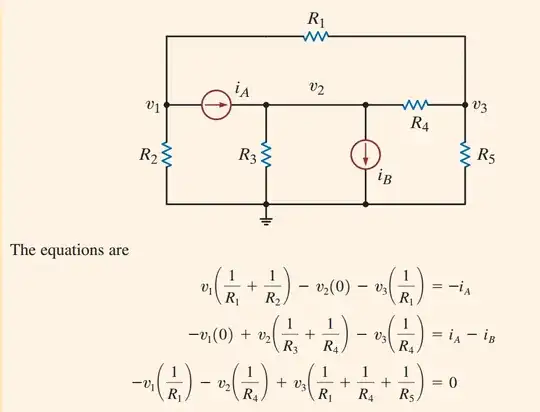In this diagram, we see node V2, I can understand how it can be treated as a node. But I don't understand in the equation how \$-v2(0)\$ comes.
I thought maybe the R for short circuit is 0, then also if we take KCL, it becomes \$v2/R = V2/0 = V2*\infty\$. But why is \$-v2(0)\$ in equation no. 1 and also \$v1(0)\$ in equation no. 2?
I want to understand the equations and nodal analysis special cases like this.

